- Home
- Clive Cussler
Serpent nf-1
Serpent nf-1 Read online
Serpent
( NUMA Files - 1 )
Clive Cussler
It won't surprise those who remember Cussler's Raise the Titanic! (1976) that he now uses the 1956 sinking of the Andrea Doria as the springboard for another thriller involving the National Underwater and Maritime Agency. According to Cussler, the Andrea Doria sinking was deliberate, but that secret begins unraveling two generations later, when archaeologist Nina Kirov, fleeing a "terrorist" attack on her dig, is rescued by a NUMA vessel. Aboard are Kurt Austin and Joe Zavala, NUMA field operatives equally deft with underwater hardware and the ladies. The pair's first job is standing off the "terrorists" pursuing Kirov. Plots--not to mention counterplots--rapidly thicken as NUMA squares off against Halcon, who is clearly a descendant of Fu Manchu despite his Latino characterization. Halcon seeks an immense treasure, brought by fleeing Carthaginians to the Mayan empire, to finance an independent Latino nation in the U.S. Southwest. Before Halcon is defeated, Cussler dispenses, with new collaborator Kemprecos' aid, the fast action, larger-than-life characters, less-than-graceful prose, credulity-stretching scenarios, and high-saltwater content that are his trademarks. A superlative subplot relays the adventures of archaeologist Gamay Trout and her companion, the Mayan Dr. Chi, as they try to escape outlaws, Halcon's minions, and the natural hazards of the Yucatan Peninsula. Likely to prove eminently satisfactory to Cussler fans.
Clive Cussler's Serpent
INTRODUCING A FRIEND
When I was asked to introduce Kurt Austin, Joe Zavala, and their friends who serve the National Underwater and Marine Agency, I accepted with great pleasure and enthusiasm. I've had the privilege of knowing Kurt and Joe for many years. We first met when they joined NUMA at Admiral Sandecker's invitation not long after Al Giordino and I came on board. Although we've never had the opportunity to work on the same project together, Kurt and Joe's escapades above and underwater have often fired my imagination and left me wishing I'd done that.
In some ways Kurt and I are similar. He's a few years younger, and we hardly look alike, but he lives in an old remodeled boathouse on the Potomac River and collects antique dueling pistols, a wise choice when you consider how much simpler they are to maintain and store than the old. cars in my aircraft hangar. He's also into rowing and sailing, which sends me into exhaustion just thinking about it.
Kurt is resourceful and shrewd, and he has more guts than a white shark on steroids. He's also a genuine nice guy with two tons of integrity who believes in the flag, mothers, and apple pie. To my chagrin, the ladies find him very attractive, even more attractive than they find me.
The only obscure conclusion I can reachit pains me deeply to say sois that between the two of us he's better looking.
I'm happy that Kurt and Joe's exploits are finally being chronicled from the NUMA Files. There is not the slightest doubt that you will find them entertaining as well as an intriguing way to while away the time. I know that I have.
Dirk Pitt
ACKNOWLEDGMENTS
WITH APPRECIATION TO DON STEVENS for taking us down to the Andrea Doria without getting our feet wet, and for the work of two fine writers, Alvin Moscow and William Hoffer, whose books Collision Course and Saved so vividly describe the human side of that great sea tragedy. And for the tenacity of that intrepid explorer John L. Stephens, who braved mosquitoes and malaria as he trekked through the Yucatan discovering the wonders of the lost Mayan civilization.
PROLOGUE
July 25, 1956
South of Nantucket Island
SO QUICKLY DID THE PALE SHIP appear, she seemed to spring whole from the depths, gliding like a ghost across the silver pool of luminescence cast by the near full moon. Tiaras of porthole lights glittered along her bone-white sides as she raced eastward in the warm night, her sharply raked bow knifing through the flat seas as easily as a stiletto cutting through black satin.
High in the darkened bridge of the Swedish American liner Stockholm, seven hours and 130 miles east of New York City Second Mate Gunnar Nillson scanned the moonlit ocean. The big rectangular windows that wrapped around the wheelhouse gave him a panoramic view as far as he could see. The surface was calm except for a ragged swell here and there. The temperature was in the seventies, a pleasant change from the heavy humid air that weighed over the Stockholm that morning as the liner left its berth at the Fifty Seventh Street pier and headed down the Hudson River. Remains of the woolly overcast drifted in tattered shrouds across the porcelain moon. Visibility was a half dozen miles to starboard.
Nillson swept his eyes to port, where the thin, dark horizon line became lost behind a hazy murkiness that veiled the stars and welded the sky and sea.
For a moment he was lost in the drama of the scene, sobered by the thought of the vast and trackless emptiness yet to be crossed. It was a common feeling among mariners, and it would have lasted longer if not for the tingling in the soles of his feet. The power produced by the massive twin 14,600horsepower diesels seemed to flow up from the engine room through the vibrating deck and into his body, which swayed almost imperceptibly to adjust for the slight roll. Dread and wonder ebbed, to be replaced by the omnipotent sensation that comes with being in command of a swift liner racing across the ocean at top speed.
At 525 feet sterntostern and 69 feet in the beam, the Stockholm was the smallest liner in the transatlantic trade. Yet she was a special ship, sleek as a yacht, with racy lines that swept back from her long forecastle to a stern as softly rounded as a wine glass. Her gleaming skin was all white except for a single yellow funnel. Nillson luxuriated in the power of command. With a snap of his fingers the three crewmen on watch would jump to his orders. With a flick of a lever on the ship's telegraphs he could set bells clanging and men scurrying to action.
He chuckled, recognizing his hubris for what it was. His four-hour watch was essentially a series of routine tasks aimed at keeping the ship on an imaginary line that would bring it to an imaginary point near the stubby red lightship that guarded Nantucket's treacherous shoals. There the Stockholm would make the northeasterly turn onto a course that would take its 534 passengers past Sable Island on a straight shot across the Atlantic to the north of Scotland and, finally Copenhagen Harbor.
Even though he was only twenty eight and had joined the Stockholm barely three months earlier, Nillson had been on boats since he could walk. As a teenager he'd worked the Baltic Sea herring bats and later served as an apprentice seaman with a huge shipping company. Then came the Swedish Nautical College and a stint in the Swedish navy. The Stockholm was one more step in achieving his dream, to be master of his own ship.
Nillson was an exception to the common tall blond Scandinavian stereotype. There was more of Venice than Viking in him. He had inherited his mother's Italian genes, along with her chestnut hair, olive skin, smallboned stature, and sunny temperament. Darkhaired Swedes were not unusual. At times Nillson wondered if the Mediterranean warmth lurking in his large brown eyes had anything to do with his captain's frostiness. More likely it was a combination of Scandinavian reserve and the rigid Swedish maritime tradition of strict discipline: Nevertheless, Nillson worked harder than he had to. He didn't want to give the captain a single reason to find fault. Even on this peaceful night, with no traffic,. near flat seas, and perfect weather, Nillson paced from one wing of the bridge to the other as if the ship were in the teeth of a hurricane.
The Stockholm's bridge was divided into two spaces, the twentyfootwide wheelhouse in front and the separate chartroom behind it. The doors leading out to the wings were left open to the light southwest breeze. At each side of the bridge was an RCA radar set and a ship's telegraph. At the center of the wheelhouse the helmsman stood on a wooden platform a few inches off the polished deck, his back to the dividing
wall, hands gripping the steering wheel, eyes on the face of a gyrocompass to his left. Directly in front of the helm, below the center window, was a course box. The three wooden blocks in the box were printed with numbers to keep the helmsman's mind focused on the heading.
The blocks were set at 090.
Nillson had come up a few minutes before his eightthirty watch to look at the weather reports. Fog was forecast for the area hear the Nantucket lightship. No surprise there. The warm waters of the Nantucket shoals were a virtual fog factory. The officer going off duty told him the Stockholm was just north of the course set by the captain. How far north he couldn't tell. The radio positioning beacons were too far away to get a fix.
Nillson smiled. No surprise here, either. The captain always took the same course, twenty miles north of the eastbound sealane recommended by international agreement. The route wasn't mandatory, and the captain preferred the more northerly track because it saved time and fuel.
Scandinavian captains did not do bridge watch, customarily leaving the ship in charge of a single officer. Nillson quickly settled into a series of tasks. Pace the bridge. Check the righthand radar. Glance at the engine telegraphs on each wing of the bridge to make sure they were set Full Speed Ahead. Scan the sea from a wing. Make sure the two white masthead navigation lights were on. Stroll back into the wheelhouse. Study the gyrocompass. Keep the helmsman on his toes. Pace some more.
The captain came up around nine after having dinner in his cabin directly below the bridge. A taciturn man in his late fifties, he looked older, his craggy profile worn around the edges like a rocky promontory ground smooth by the unrelenting sea. His posture was still ramrod straight, his uniform razorcreased. Icebergblue eyes glinted alertly from the weathered ruins of his ruddy face. For ten minutes he paced behind the bridge, gazing at the ocean and sniffing the warm air like a bird dog catching the scent of pheasant. Then he went into the wheelhouse and studied the navigation chart as if in search of an omen.
After a moment he said, "Change course to eightyseven degrees."
Nillson turned the oversized dice in the course box to read 087. The captain stayed long enough to watch the helmsman adjust the wheel, then returned to his cabin.
Back in the chartroom Nillson erased the ninetydegree line, penciled in the captains new course, and figured the ship's position by dead reckoning. He extended the track line according to speed and time elapsed and drew in an, X. The new line would take them about five miles from the lightship. Nillson figured strong northerly currents would push the ship as dose as two miles.
Nillson went over to the radar set near the right door and switched the range from fifteen miles to fifty miles. The thin yellow sweep hand highlighted the slender arias of Cape Cod and the islands of Nantucket and Martha's Vineyard. Ships were too small for the radar to pick up at that range. He returned the range to its original setting and resumed his pacing.
Around ten the captain returned to the bridge. "I'll be in my cabin doing paperwork," he announced. "I'll make the course change north in two hours. Call me to the bridge if you see the lightship before then." He squinted out a window as if he sensed something he couldn't see. "Or if there is fog or other bad weather."
The Stockholm was now forty miles west of the lightship, close enough to pick up its radio beacon. The radio direction finder indicated that the Stockholm was more than two miles north of the captains course. Currents must be pushing the Stockholm north, Nillson concluded.
Another RDF fix minutes later showed the ship nearly three miles north of the course. Still nothing to be alarmed about; he'd simply keep a close eye on it. Standing orders were to call the captain in case of drift off course. Nillson pictured the expression on the captain's seamed face, the hardly veiled contempt in those seabitten eyes. You called me up here from my cabin for this? Nillson scratched his chin in thought. Maybe the problem was with the direction finder. The radio beacons still might be too far away for an accurate fix.
Nillson knew he was a creature of the captain's will. Yet he was, after all, the officer in command of the bridge. He made his decision.
"Steer eightynine," he ordered the helmsman.
The wheel moved to the right, taking the ship slightly south, closer to the original course.
The bridge crew changed posts as it did every eighty minutes. Lars Hansen came in from standby and took over the helm.
Nillson grimaced, not altogether pleased with the change. He never felt comfortable sharing a shift with the man. The Swedish navy was all business. Officers talked to the crewmen only to give orders. Pleasantries simply were not exchanged. Nillson sometimes broke the rule, quietly sharing a joke or wry observation with a crewman. Never with Hansen.
This was Hansen's first voyage on the Stockholm. He came on board as a lastminute replacement when the man who signed on hadn't shown up: According to Hansen's papers he'd kicked around on a number of ships. Yet nobody couldplace him, which was hard to believe. Hansen was lanternjawed, tall, broadshouldered, and his blond hair was cropped close to the scalp. The same description could apply to a few million other Scandinavian men in their early twenties. It would be hard to forget Hansen's face. A fierce white scar ran from his prominent cheekbone nearly to the righthand corner .of his mouth, so his lips seemed turned up on one side in a grotesque smile. Hansen had served mostly on freighters, which might explain his anonymity. Nillson suspected it was more likely the man's behavior. He kept to himself, spoke only when he was spoken to, and then not very much. Nobody ever asked him about his scar.
He turned out to be a good crewman, Nillson had to admit, jumping smartly to orders and carrying them out without a question. Which was why Nillson was puzzled as he checked the compass. On past shifts Hansen had shown himself to be a competent helmsman. Tonight he was letting .the ship drift as if his attention were wandering. Nillson understood that it took a while to get the feel of the helm. Except for the current, though, steering was undemanding. No howling wind. No giant seas breaking over the deck. Just move the wheel a little this way, a little that way.
Nillson checked the gyrocompass. No doubt about it. The ship was yawing slightly. He stood close to the helmsman's shoulder. "Keep a tight line, Hansen," he said with gentle humor. "This isn't a warship, you know."
Hansen's head swiveled on the muscular neck. The reflected glow from the compass imparted an. animal glitter to his eyes and accentuated the deepness of the scar. Heat seemed to radiate from his glare. Sensing. a quiet aggressiveness, Nillson almost. stepped backward in reflex. He stubbornly held his ground, though, and gestured at the course box numerals.
The helmsman stared at him without expression for a few seconds, then nodded almost imperceptibly.
Nillson made sure the course was steady, mumbled his approval, then escaped into the chartroom. .
Hansen gave him the creeps, he thought, shivering as he took another radio fix to see the effect of the drift. Something didn't make sense. Even with the twodegree correction to the south, the Stockholm was north of the course by three miles.
He went back into the wheelhouse, and without looking at Hansen he ordered, "Two degrees to the right."
Hansen eased the wheel to ninetyone degrees.
Nillson changed the course box numbers and stayed by the compass until he was satisfied Hansen had brought the ship onto the new tack. Then he bent over the radar, the yellow glow from the scope giving his dark skin a jaundiced tinge. The sweep hand illuminated a blip off to the left side of the screen, about twelve miles away. Nillson raised an eyebrow.
The Stockholm had company.
Unknown to Nillson, the Stockholm's hull and superstructure were being washed by unseen electronic waves that rippled back to the revolving radar antenna high atop the bridge of a ship speeding toward it from the opposite direction. Minutes earlier, inside the spacious bridge of the Italian Line passenger ship Andrea Doria, the officer manning the radar scope called out to a stocky man wearing a navy beret and a uniform of evening
blue. .
"Captain, I see a ship, seventeen miles, four degrees to starboard.
The radar had been monitored constantly at twentymile range since three o'clock, when Superior Captain Piero Calamai walked onto the bridge wing and saw gray wisps hovering over the western sea like the souls of drowned men.
Immediately the captain had ordered the ship rigged for running in the fog. The 572 man crew had been on full alert. The foghorn was blowing automatically at hundredsecond intervals.
The crow's nest lookout was reassigned to the bow where he'd have a clearer, view. The engineroom crew was put on standby, primed to react instantly in an emergency The doors between the ship's eleven watertight compartments were sealed.
The Andrea Doria was on the last leg of a 4,000mile, nine-day voyage from its home port of Genoa carrying 1,134 passengers and 401 tons of freight. Despite the dense fog pressing down on its decks, the Doria cruised at dose to its full speed, its massive 35,000 horsepower twinturbine engines pushing the big ship through the sea at twentytwo knots.
The Italian Line did not gamble with its ships and passengers. Nor did it pay captains, to arrive behind schedule. Time was money. No one knew this any better than Captain Calamai, who had commanded the ship on ail its transatlantic crossings. He was determined that the ship would arrive in New York not one second beyond the hour it had lost in a storm two nights earlier.
When the Doria had rolled by the lightship at tentwenty PM., the bridge could pick the vessel up on radar and hear the lonely moan of its foghorn, but it was invisible at less than a mile away.. With the lightship behind them, the Doria's captain ordered a course due west to New York
The radar pip was heading east, directly at the Doria, Calamai bent over the radar screen, his brow furrowed, watching the . blip's progress: The radar couldn't tell the captain what hind of ship he .was looking at or how big it was. He didn't know he was looking at a fast ocean liner. With a combined speed of forty knots, the two ships were dosing on each other at the rate of two miles every three minutes.

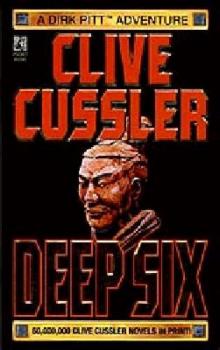 Deep Six
Deep Six Odessa Sea
Odessa Sea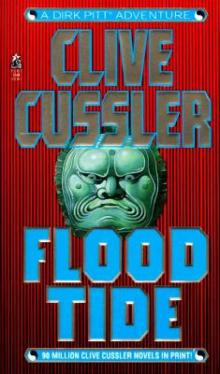 Flood Tide
Flood Tide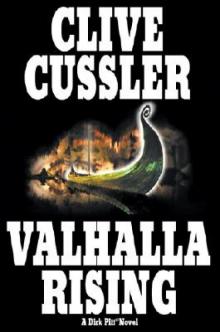 Valhalla Rising
Valhalla Rising Thriller 2
Thriller 2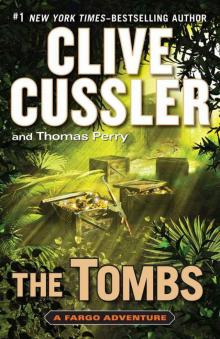 The Tombs
The Tombs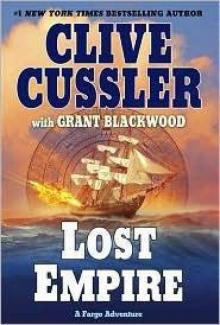 Lost Empire
Lost Empire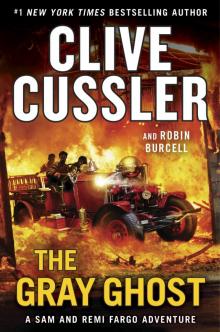 The Gray Ghost
The Gray Ghost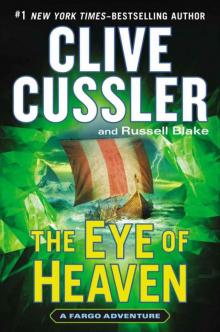 The Eye of Heaven
The Eye of Heaven Polar Shift
Polar Shift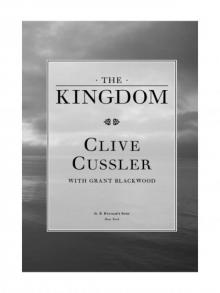 The Kingdom
The Kingdom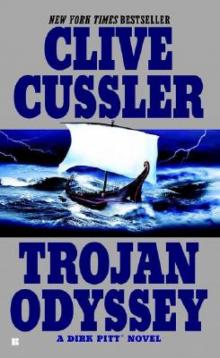 Trojan Odyssey
Trojan Odyssey Shadow Tyrants
Shadow Tyrants Nighthawk
Nighthawk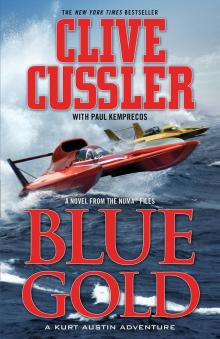 Blue Gold
Blue Gold Serpent
Serpent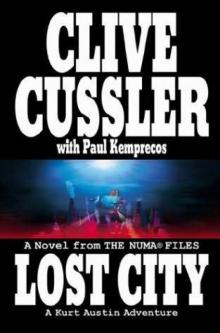 Lost City
Lost City The Gangster
The Gangster White Death
White Death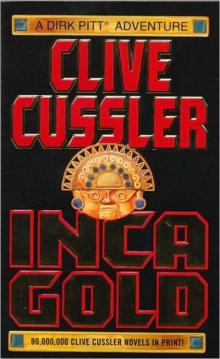 Inca Gold
Inca Gold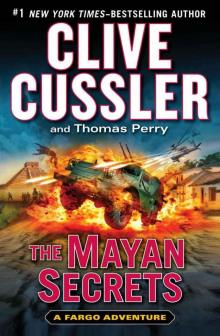 The Mayan Secrets
The Mayan Secrets The Pharaoh's Secret
The Pharaoh's Secret The Emperor's Revenge
The Emperor's Revenge Corsair
Corsair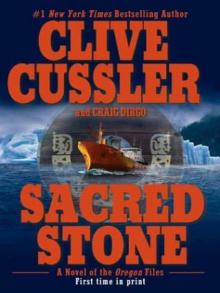 Sacred Stone
Sacred Stone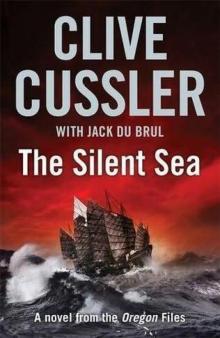 The Silent Sea
The Silent Sea The Rising Sea
The Rising Sea Black Wind
Black Wind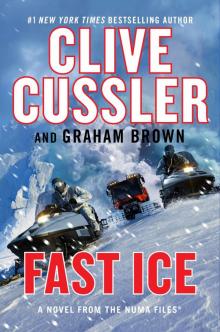 Fast Ice
Fast Ice Ghost Ship
Ghost Ship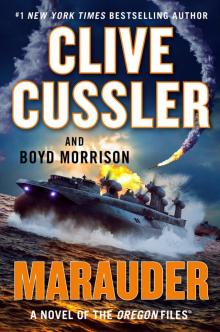 Marauder
Marauder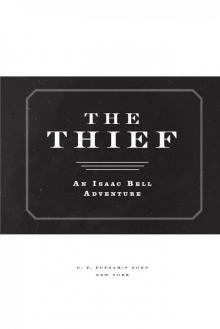 The Thief
The Thief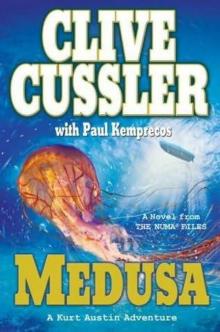 Medusa
Medusa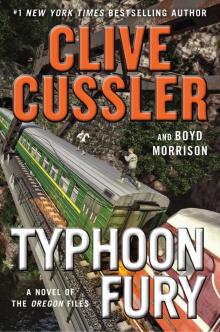 Typhoon Fury
Typhoon Fury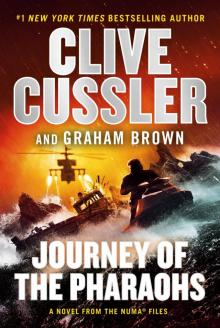 Journey of the Pharaohs
Journey of the Pharaohs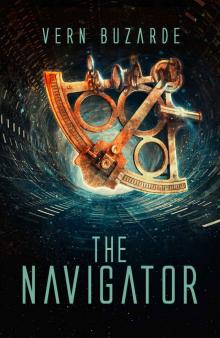 The Navigator
The Navigator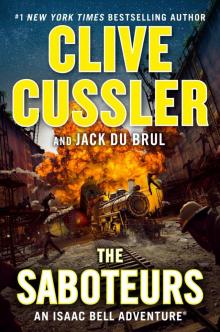 The Saboteurs
The Saboteurs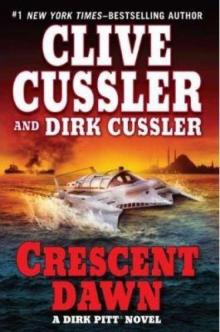 Crescent Dawn
Crescent Dawn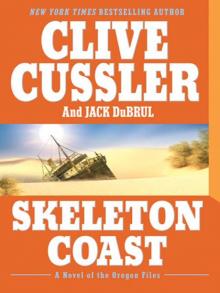 Skeleton Coast
Skeleton Coast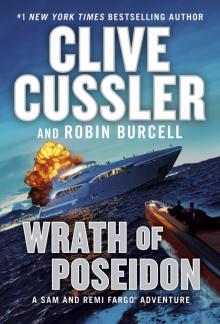 Wrath of Poseidon
Wrath of Poseidon The Mediterranean Caper
The Mediterranean Caper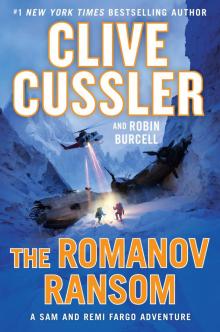 The Romanov Ransom
The Romanov Ransom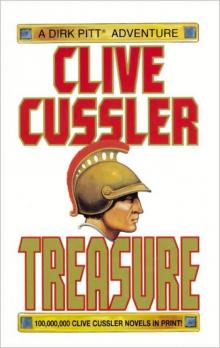 Treasure
Treasure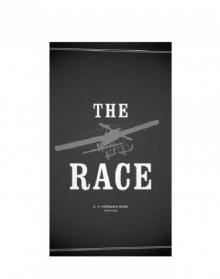 The Race
The Race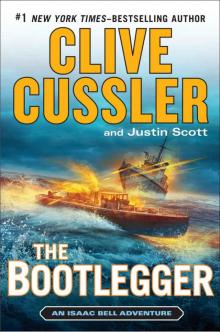 The Bootlegger
The Bootlegger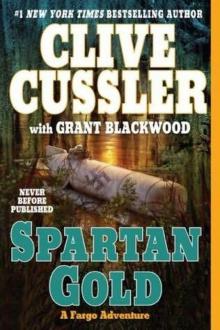 Spartan Gold
Spartan Gold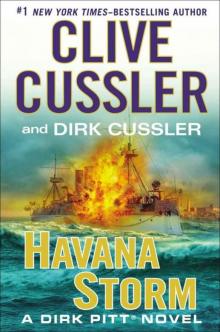 Havana Storm
Havana Storm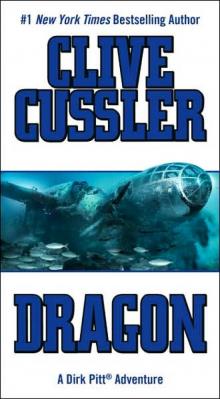 Dragon
Dragon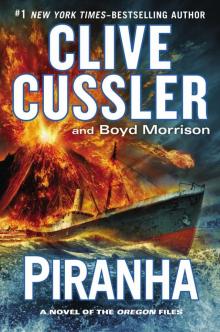 Piranha
Piranha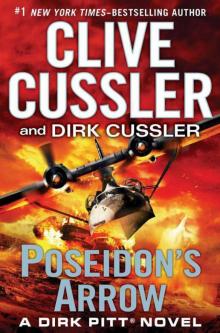 Poseidon's Arrow
Poseidon's Arrow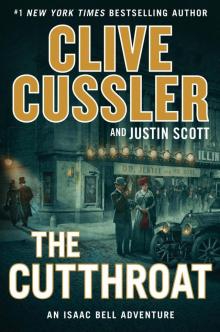 The Cutthroat
The Cutthroat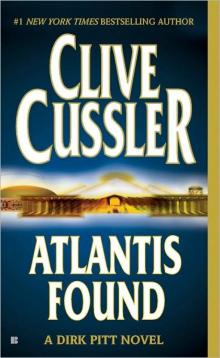 Atlantis Found
Atlantis Found The Jungle
The Jungle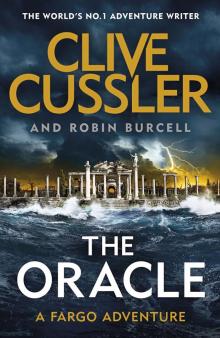 The Oracle
The Oracle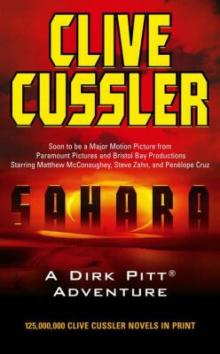 Treasure / Dragon / Sahara: Clive Cussler Gift Set
Treasure / Dragon / Sahara: Clive Cussler Gift Set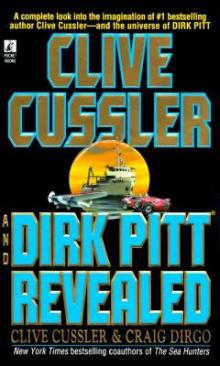 Clive Cussler and Dirk Pitt Revealed
Clive Cussler and Dirk Pitt Revealed The Sea Hunters
The Sea Hunters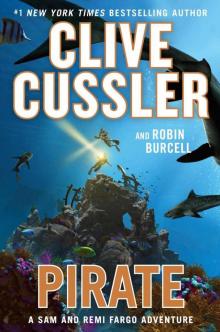 Pirate
Pirate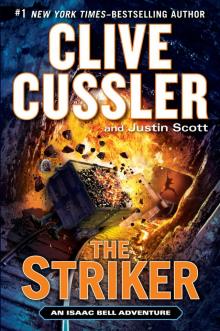 The Striker
The Striker Plague Ship
Plague Ship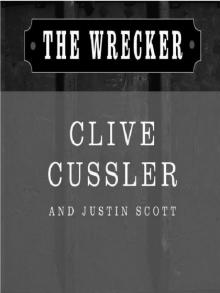 The Wrecker
The Wrecker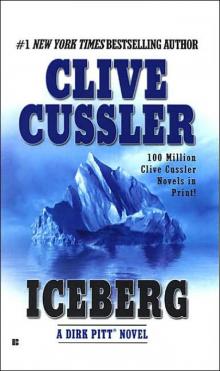 Iceberg
Iceberg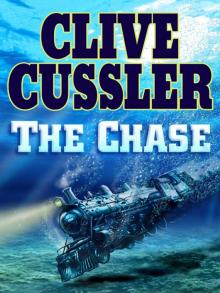 The Chase
The Chase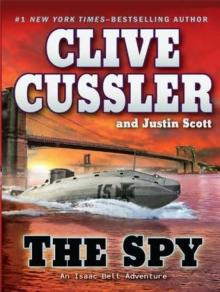 The Spy
The Spy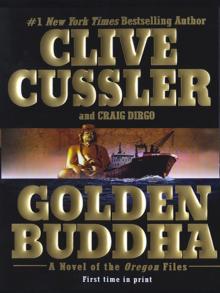 Golden Buddha
Golden Buddha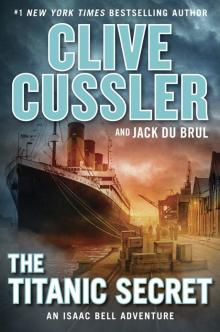 The Titanic Secret
The Titanic Secret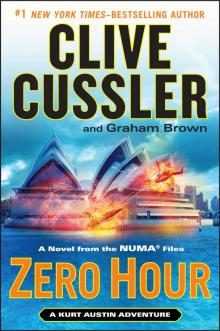 Zero Hour
Zero Hour Fire Ice
Fire Ice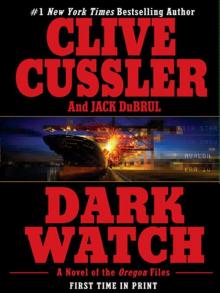 Dark Watch
Dark Watch The Storm
The Storm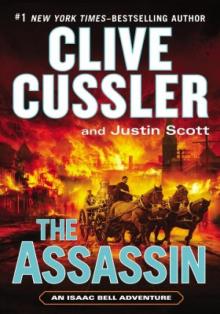 The Assassin
The Assassin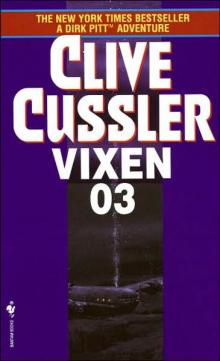 Vixen 03
Vixen 03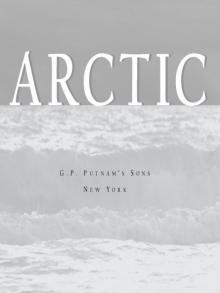 Arctic Drift
Arctic Drift Night Probe!
Night Probe! Cyclops
Cyclops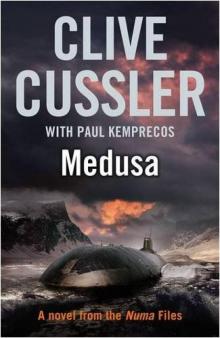 Medusa nf-8
Medusa nf-8 Shock Wave dp-13
Shock Wave dp-13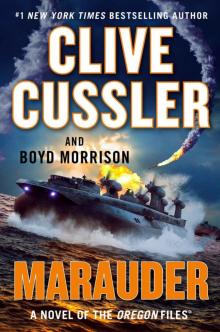 Marauder (The Oregon Files)
Marauder (The Oregon Files)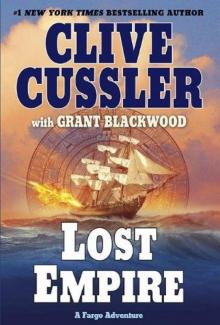 Lost Empire fa-2
Lost Empire fa-2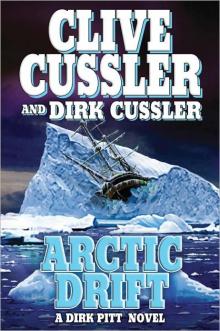 Arctic Drift dp-20
Arctic Drift dp-20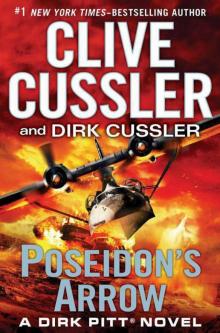 Dirk Pitt 22 - Poseidon's Arrow
Dirk Pitt 22 - Poseidon's Arrow Treasure of Khan dp-19
Treasure of Khan dp-19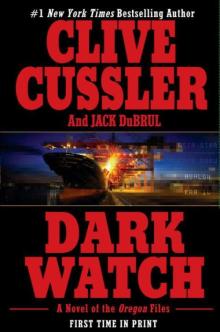 Dark Watch of-3
Dark Watch of-3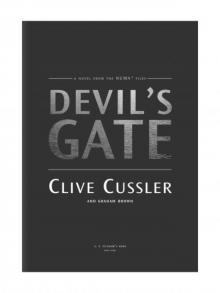 Devil's Gate
Devil's Gate The Sea Hunters II: More True Adventures with Famous Shipwrecks
The Sea Hunters II: More True Adventures with Famous Shipwrecks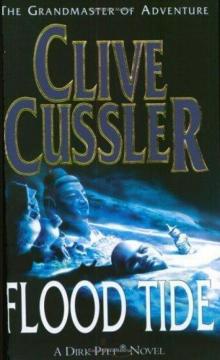 Flood Tide dp-14
Flood Tide dp-14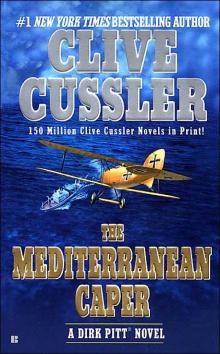 The Mediterranean Caper dp-2
The Mediterranean Caper dp-2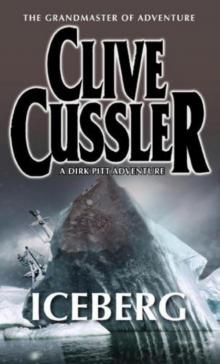 Iceberg dp-3
Iceberg dp-3 Sahara dpa-11
Sahara dpa-11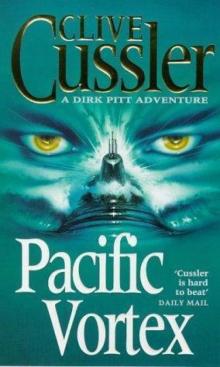 Pacific Vortex! dp-1
Pacific Vortex! dp-1 Deep Six dp-7
Deep Six dp-7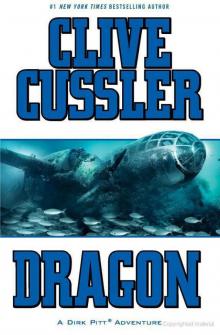 Dragon dp-10
Dragon dp-10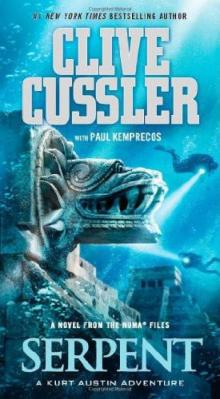 Serpent nf-1
Serpent nf-1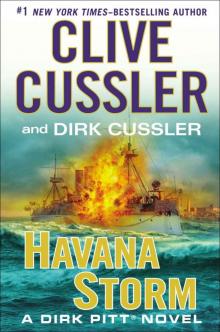 Havana Storm (Dirk Pitt Adventure)
Havana Storm (Dirk Pitt Adventure)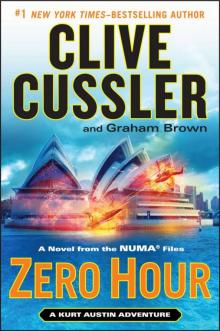 Zero Hour nf-11
Zero Hour nf-11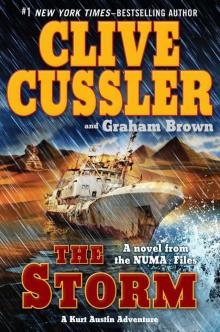 The Storm nf-10
The Storm nf-10 The Thief ib-5
The Thief ib-5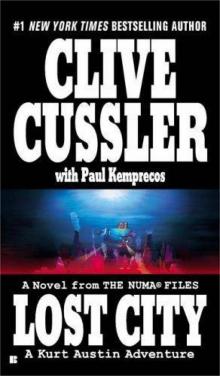 Lost City nf-5
Lost City nf-5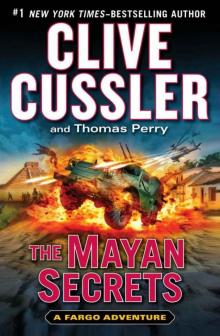 The Mayan Secrets fa-5
The Mayan Secrets fa-5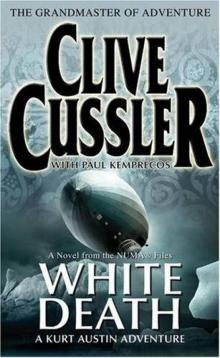 White Death nf-4
White Death nf-4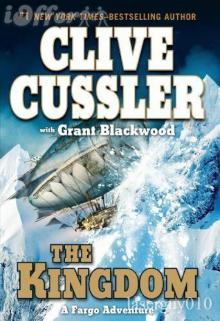 The Kingdom fa-3
The Kingdom fa-3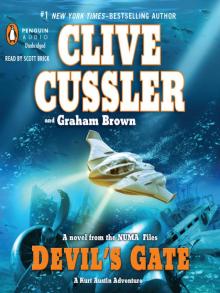 Devil's Gate nf-9
Devil's Gate nf-9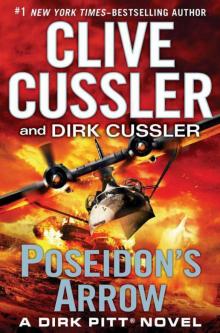 Poseidon's Arrow dp-22
Poseidon's Arrow dp-22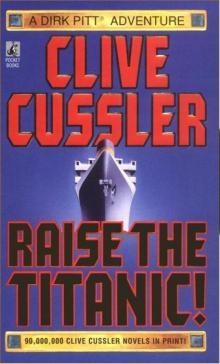 Raise the Titanic dp-4
Raise the Titanic dp-4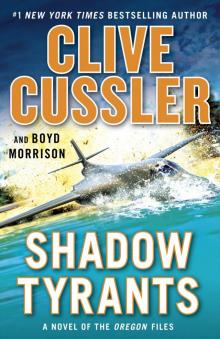 Shadow Tyrants--Clive Cussler
Shadow Tyrants--Clive Cussler Sacred Stone of-2
Sacred Stone of-2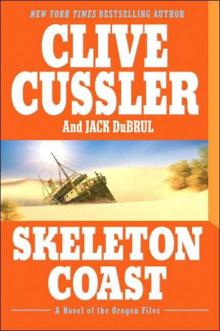 Skeleton Coast tof-4
Skeleton Coast tof-4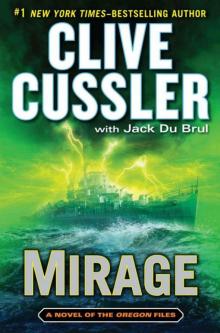 Mirage tof-9
Mirage tof-9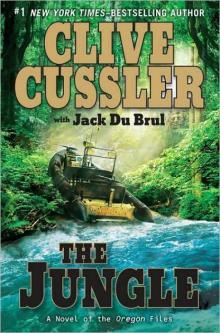 The Jungle of-8
The Jungle of-8 The Emperor's Revenge (The Oregon Files)
The Emperor's Revenge (The Oregon Files)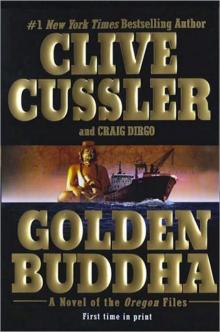 Golden Buddha of-1
Golden Buddha of-1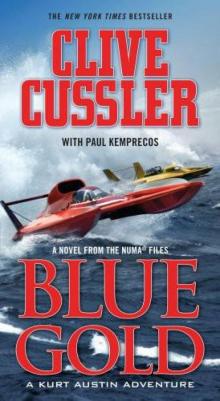 Blue & Gold
Blue & Gold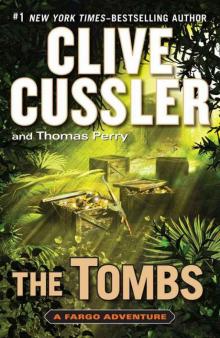 The Tombs fa-4
The Tombs fa-4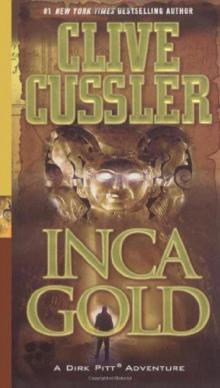 Inca Gold dp-12
Inca Gold dp-12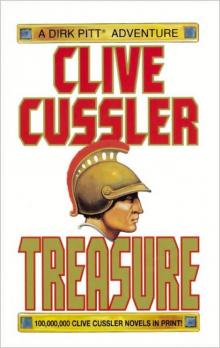 Treasure dp-9
Treasure dp-9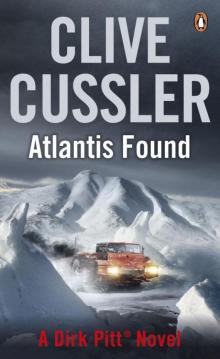 Atlantis Found dp-15
Atlantis Found dp-15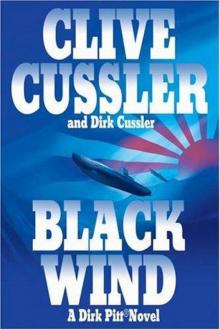 Black Wind dp-18
Black Wind dp-18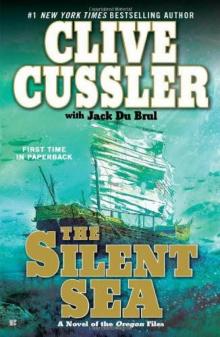 the Silent Sea (2010) tof-7
the Silent Sea (2010) tof-7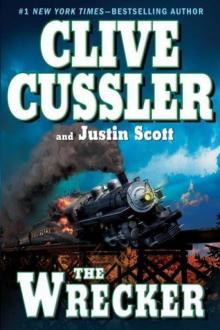 The Wrecker ib-2
The Wrecker ib-2 Fire Ice nf-3
Fire Ice nf-3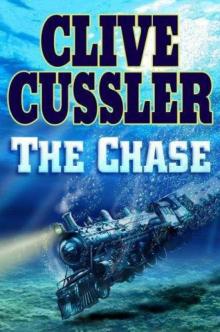 The Chase ib-1
The Chase ib-1 Sahara
Sahara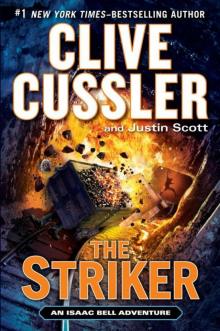 The Striker ib-6
The Striker ib-6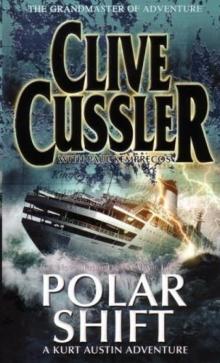 Polar Shift nf-6
Polar Shift nf-6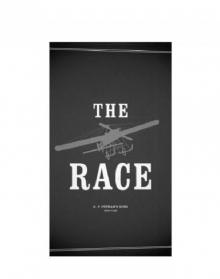 The Race ib-4
The Race ib-4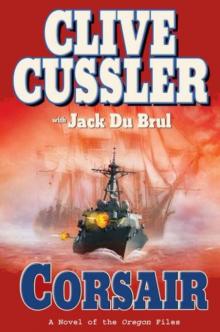 Corsair of-6
Corsair of-6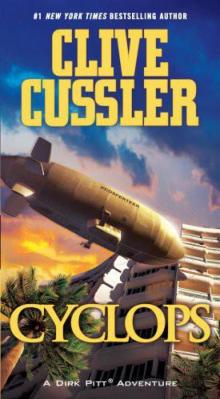 Cyclops dp-8
Cyclops dp-8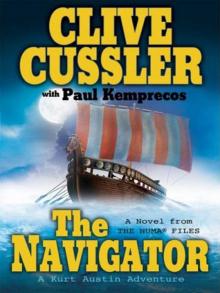 The Navigator nf-7
The Navigator nf-7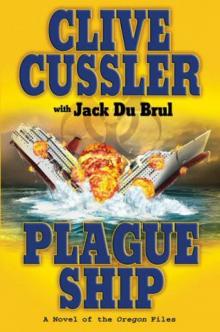 Plague Ship tof-5
Plague Ship tof-5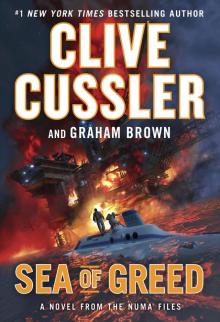 Sea of Greed
Sea of Greed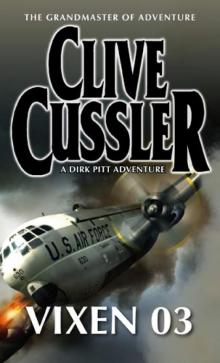 Vixen 03 dp-5
Vixen 03 dp-5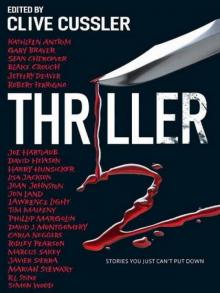 Thriller 2: Stories You Just Can't Put Down
Thriller 2: Stories You Just Can't Put Down